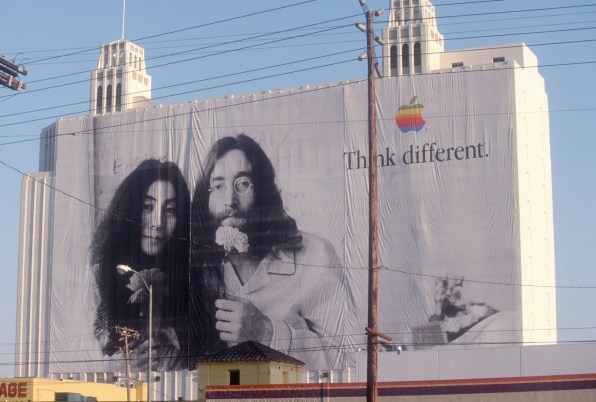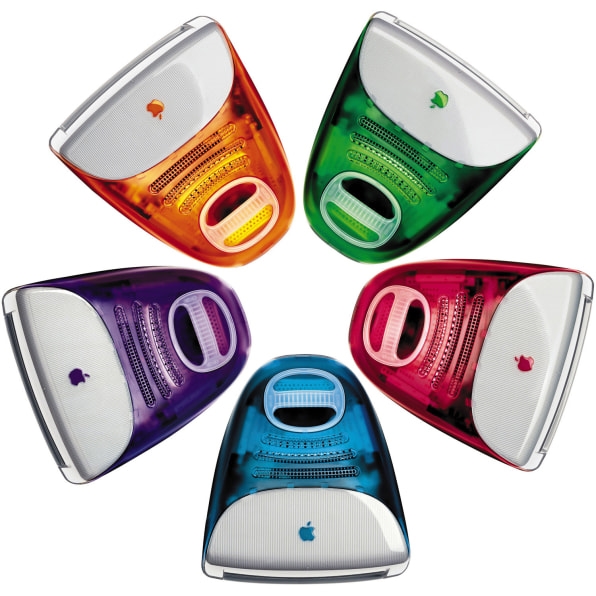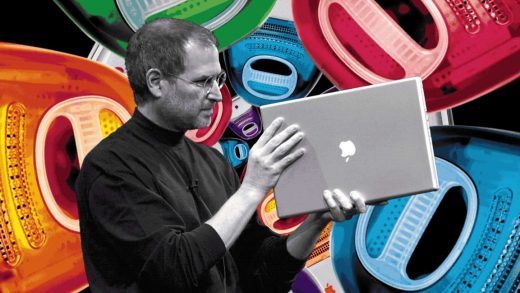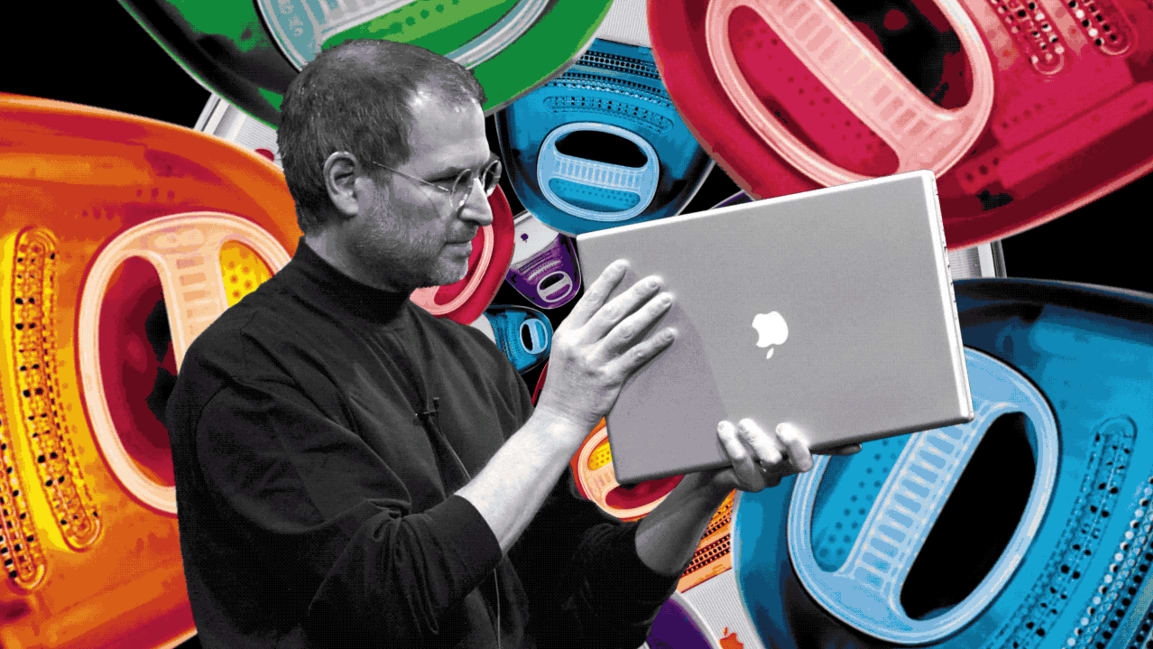Steve Jobs’s real talent wasn’t design—it was seduction
In the 22 years I worked at Apple, I rarely saw anyone sell anything. As a sales executive in the Higher Education division, it was my job to convince college administrators and students to spend more money on an iMac than a PC. But when Steve Jobs returned in 1997, traditional selling went extinct in our corner of Cupertino. Jobs was a master salesman, but to him, selling wasn’t selling. It was seduction.
Jobs built on the ideas of Apple’s ’70s marketing legend Regis McKenna, who saw before anyone else did that Apple’s early computers could appeal to people who didn’t spend their time disassembling motherboards—to students, teachers, musicians, and other creative people like me, who thought computers could be, you know, fun.
Because of Jobs, Apple’s sales, marketing, and design teams understood consumer psychology better than perhaps any company in history. We knew no one likes to be sold to. People despise feeling like they’re just one more target a sales rep needs to make his monthly numbers, and who can blame them? That’s why, for me, selling was all about the relationship. When I called on university presidents and deans, I first sold them on me. Then on Apple. Finally, we talked about products.
But even then, we weren’t talking about beige boxes and “speeds and feeds”—salesman-speak for yammering on about processors and memory while the customer starts looking around for sharp objects. Jobs’s genius insight was that what consumers really want technology to do isn’t crunch numbers or store data but transform and transport—to take them somewhere and give them the power to change something about their world.
I was fortunate to represent a brand that placed design and functionality ahead of everything. I’ll never forget a meeting with Jobs where he was asked about the use of technology (computers) and he simply replied, “They are still too hard to use.” With that simple statement, we stopped being Apple Computer and became Apple.
That understanding was the key to Apple’s turnaround. In August of 1997, our company was on the ropes. That year, Microsoft invested $150 million—and supported a version of Office on the Mac—to keep us alive, probably as a favor to Jobs from Bill Gates. Of course, we were lucky to have created a series of epoch-defining products, including the iMac, iPod, and iPhone. But it’s not just the products that made Apple a trillion-dollar business. For us, “Think Different” was more than an advertising slogan. It was a mantra that defined our relationship with customers by inviting them to join us as part of something extraordinary.

The “Think Different” aura enabled us to transform Apple into a luxury brand. We quit worrying about price and focused on delivering value through functionality, design, and a customer experience fine-tuned down to the smallest detail. For example, how many companies at the time would spend thousands of hours creating the perfect unboxing experience? Apple did. Incessant attention to detail is one definition of luxury.
So, how did we seduce our customers? We had a few key tricks up our sleeves, and I’m not talking about some wine and a little Barry White:
Music. In my book Live from Cupertino, I argue that Apple is more like a band than a company. How could it not be? From the earliest days, music was in our DNA. Practically everyone who worked at Apple had a musical background. Music infused the entire company, from our sales teams to our marketing, so is it any surprise that our first game-changing product was the iPod, followed by iTunes? We relied on the right words, rhythm, endless rehearsal, and the orchestration of one Mr. Jobs to cast a spell over our customers. Remember those iconic primary-colored iTunes TV spots with young people joyfully dancing in silhouette? We wanted to convey that Apple was a feeling, and nothing captured that feeling better than music.
Sensuality. Before Apple, computers were boring. IBM, HP, and all the other PC players assumed that performance mattered more to consumers than pleasure or inspiration. They were wrong. The candy-colored iMacs released in 1998 added a sensual dimension to what was also a powerful (for the time) machine: vibrant colors that provoked smiles, a curvaceous teardrop shape, and that round mouse (okay, we blew it with that one). The iMac was a delight to look at and to use, and people loved it. In the tech world, beauty became as important as speed and power. Little-known fact: The candy-colored iMac shells became highly contentious in the Higher Education division at Apple. Why? University of Florida (Gator) orange is a slighter different shade than University of Tennessee (Volunteer) orange. As the former president of the University of Florida told me, “It’s Tennessee orange, not Gator orange.”

Tactility. Jobs’s gift was understanding that while consumers would be satisfied with fast, reliable devices, they craved magic, and nothing is more magical than an enchanted object. Where would Harry Potter be without his wand, or Gandalf without his staff? Apple’s products needed to be and feel magical. The tactile experience of using an iPod or iPhone had to be—well, it had to be exactly as you imagined it would be, from the texture of a notebook case to the feel of AirPods in your ears. Even the texture of our boxes and bags had to be just right. We wanted people to be able to touch and own a little bit of magic.
Emotion. If I asked you to describe what it feels like to use a Windows PC, what would you say? Efficient, maybe? Wow, be still my heart. But the user experience, marketing, and versatility of Apple’s products made our customers feel like geniuses, like the icons in the “Think Different” ads, like people who could remake the world. Jobs and our marketing geniuses saw that while our competitors were utilitarian, Apple could be aspirational. Using an iPhone or MacBook Air, you could work wonders. Apple made people feel like they, too, could think different, and that brought them joy.
Belonging. Perhaps Apple’s greatest achievement was turning loyal customers into something more: a tribe. People camped outside Apple stores for days to get early versions of the iPhone. That sense that there are two types of people in the world, “Apple people” and everyone else, was the most powerful tool in our sales and branding arsenal. When you were an Apple person, you were part of a family of iconoclasts, artists, and rebels. You belonged to something special. Who doesn’t want to feel like they’re part of a secret society or elite club?
This is high-minded stuff for a company that basically sells computers, phones, and software. I know. But Apple really did change the world in a way that IBM, Microsoft, Dell, HP, and even Facebook and Google haven’t. We did it by turning customers into followers, like how Deadheads used to follow the Grateful Dead. What are music, beauty, sensuality, emotion, and the sense of belonging if not the tools of seduction? The world was seduced by Apple and, despite a few hiccups (iPhone 4’s metal antenna, I’m looking at you), the company has kept the romance going since 1998.
If you want to move your organization beyond selling, find a way to seduce your customers and make them fall in love.
Michael Hageloh is a former Apple sales executive who is currently a chief development officer in higher education and consults globally on orchestrating rhythms for sales, artful marketing, and institutional advancement. His book, Live from Cupertino: How Apple Used Words, Music, and Performance to Build the World’s Greatest Sales Machine, is out now from Post Hill Press.
(22)



